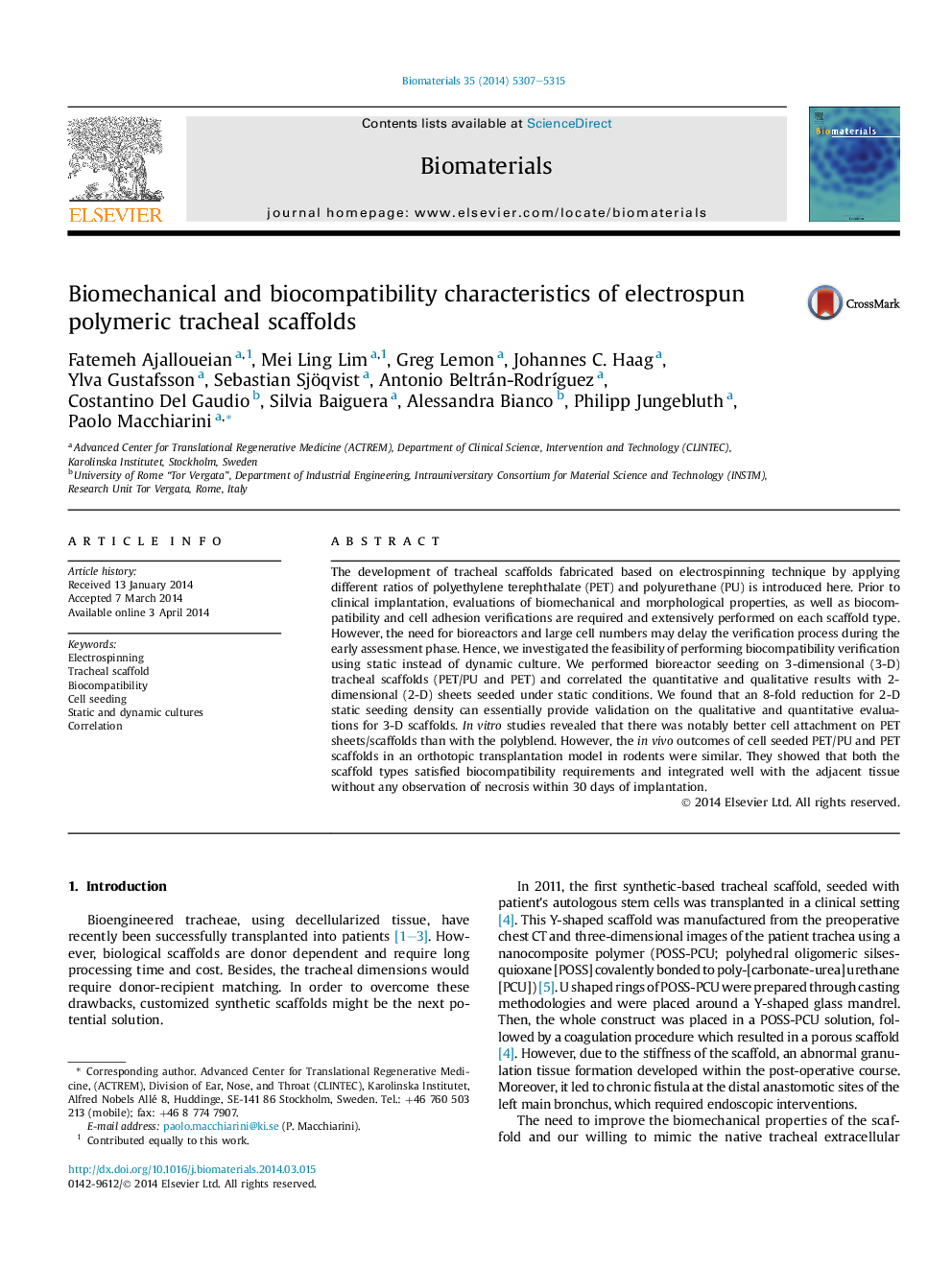| Article ID | Journal | Published Year | Pages | File Type |
|---|---|---|---|---|
| 6105 | Biomaterials | 2014 | 9 Pages |
The development of tracheal scaffolds fabricated based on electrospinning technique by applying different ratios of polyethylene terephthalate (PET) and polyurethane (PU) is introduced here. Prior to clinical implantation, evaluations of biomechanical and morphological properties, as well as biocompatibility and cell adhesion verifications are required and extensively performed on each scaffold type. However, the need for bioreactors and large cell numbers may delay the verification process during the early assessment phase. Hence, we investigated the feasibility of performing biocompatibility verification using static instead of dynamic culture. We performed bioreactor seeding on 3-dimensional (3-D) tracheal scaffolds (PET/PU and PET) and correlated the quantitative and qualitative results with 2-dimensional (2-D) sheets seeded under static conditions. We found that an 8-fold reduction for 2-D static seeding density can essentially provide validation on the qualitative and quantitative evaluations for 3-D scaffolds. In vitro studies revealed that there was notably better cell attachment on PET sheets/scaffolds than with the polyblend. However, the in vivo outcomes of cell seeded PET/PU and PET scaffolds in an orthotopic transplantation model in rodents were similar. They showed that both the scaffold types satisfied biocompatibility requirements and integrated well with the adjacent tissue without any observation of necrosis within 30 days of implantation.
